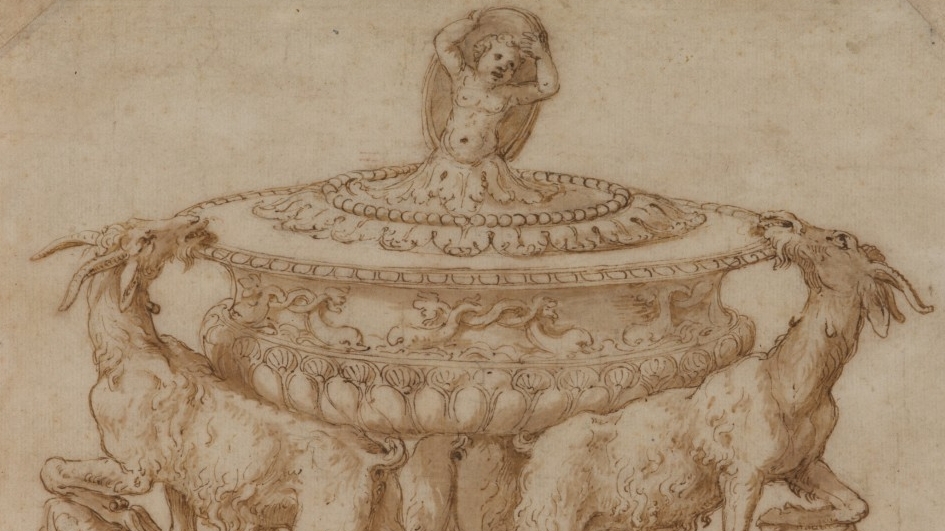
Court
Courts were centres of artistic production in the Renaissance, although during the sixteenth century the nature of court culture and the role of the court artist underwent important shifts. Within the field of art history, it was once widely agreed that artistic creativity in the Renaissance took place largely outside the court, in urban centres, where artists apparently found new freedoms, seeking patronage from emerging merchant classes, painting for growing markets, and, in the process, achieving a new status for themselves and their profession. In an influential study of 1985, however, Martin Warnke argued that the court in fact drove creativity in equal if not greater measure, affording the artist new freedoms and stimulating novelty. The drawings in this exhibition attest to artists’ abilities to negotiate both realms and assert their agency whether producing designs for luxurious media such as Giulio Romano’s drawing for a salt seller or recording courtly pageantry in France, as in the case of Caron, or alternatively creating artworks tied to the urban fabric, such as altarpieces for chapels belonging to newly wealthy families eager to outdo one another.
While the factors that attracted artists to courts may have remained fairly constant – food, accommodation, a steady work-flow, and the prestige of the title – the sixteenth century saw a shift in which artists were sought after both for their skill and for their distinctive personal style. After Raphael’s death, the disbursal of his workshop created a new landscape for painters in Italian court cities, where rulers in Mantua and Genoa employed members of the workshop to modernize the arts in their city, solidifying their sovereignty in the local theatre and, in parallel, to expressing their political allegiance to the expanding Hapsburg empire.
North of the Alps and in the Low Countries in particular, the court was but one avenue to personal advancement for artists. The bustling metropolis of Antwerp became home to Europe’s first year-round art market, known as the Pandt, at which painters could exhibit their works produced not for specific patrons but rather for the open market. In many ways, art markets today are heirs to that culture, in which ingenuity and individuality were cultivated as decisive market advantages in a competitive field.

